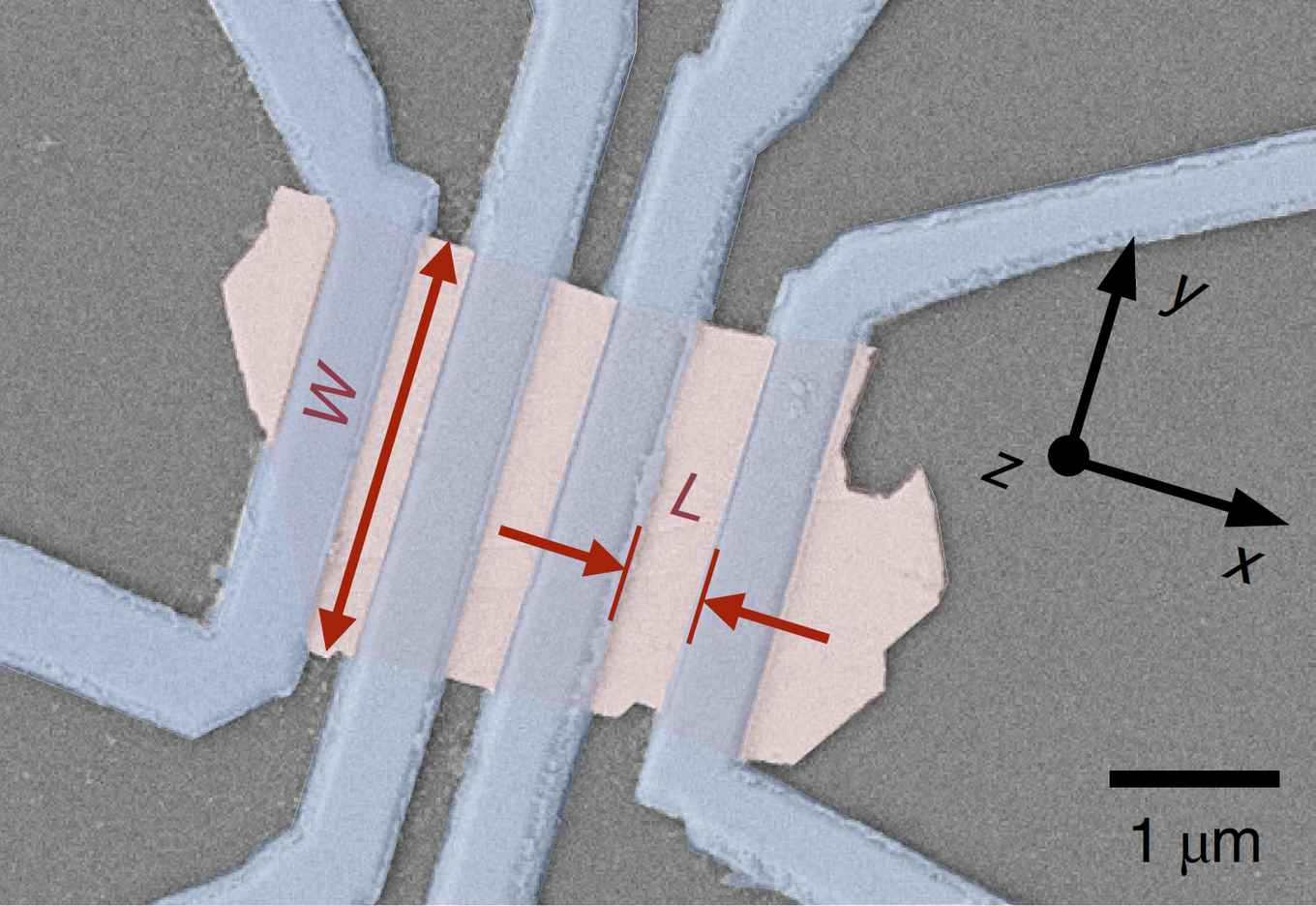Superconducting at the speed of light
4 October 2018

Sightings of Majorana modes are rare and have up to now always involved states at the edge of special, topological materials. As reported in the 1 October issue of the top title Nature Materials, a new discovery – made in a crystal of antimony-doped bismuth – now shows that the bulk electronic states of a three-dimensional Dirac semimetal can also play host to topological superconductivity and the related Majorana zero-modes. As fits the mysterious disappearance of their name-giver, these modes are detected as a missing step in a staircase of excitations of the superconductor upon illumination. As these states are protected by fundamental symmetries, their discovery on the inside of a crystal, hidden from the disturbing influences of the environment, is a valuable next step towards their application in topological quantum computation.
Spotting topological superconductivity
If quantum phases of matter were birds, the spotter’s field guide would devote its first pages to the subject of topology. As the Nobel committee recognized in 2016, topology is the organizing principle behind myriad quantum phenomena of interest both to fundamental scientists and engineers interested in disruptive new quantum computation technologies. Topological crystals possess electrons which appear to be massless and to move at the speed of light, and often display special properties at their edges or surfaces. In a new development, researchers from the universities of Twente and Amsterdam, as part of a Dutch national research programme into so-called topological insulators, have combined forces to show that inside a tuned crystal of bismuth hide the Majorana modes signaling topological superconductivity.
While it may not be found in your kitchen cupboard at home, the heavy atoms of bismuth – in the form of pure crystals – have served as a test set-up for research into the behavior of electrons in a solid for almost a hundred years. For example, it was in bismuth that it was discovered that the electrical resistance of a material can change or even oscillate by applying or changing a magnetic field, a phenomenon which has grown into an indispensable tool in modern materials research.
Most of the electrons in a crystal of bismuth are stuck on the atoms, and only very few are free to roam, conducting electricity like the electrons in a metal. However, adding a pinch of antimony (just 3%) to bismuth during the growth of the crystal creates a new kind of metal called a Dirac semimetal. The number of electrons is so low that you can barely call it a metal, but still the material conducts, even behaving as if the electrons inside were moving at the speed of light.
When spin and momentum lock together
Besides being carriers of charge, electrons also have spin, a property in which a quantum mechanical effect leads them to possess a magnetic moment. Researchers have now shown that the direction of this spin in a Dirac semimetal is locked to the direction in which the electron moves. This effect is associated with the special topology (think ‘shape’) of the connectivity of the electronic energy levels in the material. Until now electrical device measurements have only shown this topological behaviour at the surfaces or edges of materials known as topological insulators. Devices fabricated in the Twente MESA+ cleanrooms have now shown that the interior, bulk states of a semimetal also show this behaviour. As the interior of a material is more robust and less sensitive to dirt or external influences than an edge or surface, this looks to be a technologically-relevant step forward.
In the October 1 issue of the journal Nature Materials, the researchers report on their findings. Using nanotechnology, superconducting electrodes were applied to a thin crystal consisting of 97% bismuth and 3% antimony, which had been extensively characterized using synchrotron radiation and in strong magnetic fields. At very low temperatures – close to absolute zero – a current was found to flow through the crystal without any resistance, from one superconducting electrode to the other. On additionally illuminating the crystal with radio waves, the researchers discovered that a part of the supercurrent consists of so-called Majorana particles. These rare objects arise in topological superconductors, in which the spin and current of the electrons are locked together, and are the very same particles in which quantum researchers are interested for application in topological quantum computers. An accompanying News & Views item from two US researchers in the same issue of Nature Materials called these findings 'truly desirable and inspiring', a compliment that a researcher does not hear from colleagues every day.
Reference
4π-periodic Andreev bound states in a Dirac semimetal, C. Li, J. C. de Boer, B. de Ronde, S. V. Ramankutty, E. van Heumen, Y. Huang, A. de Visser, A. A. Golubov, M. S. Golden and A. Brinkman, Nature Materials 17, 875–880 (2018).